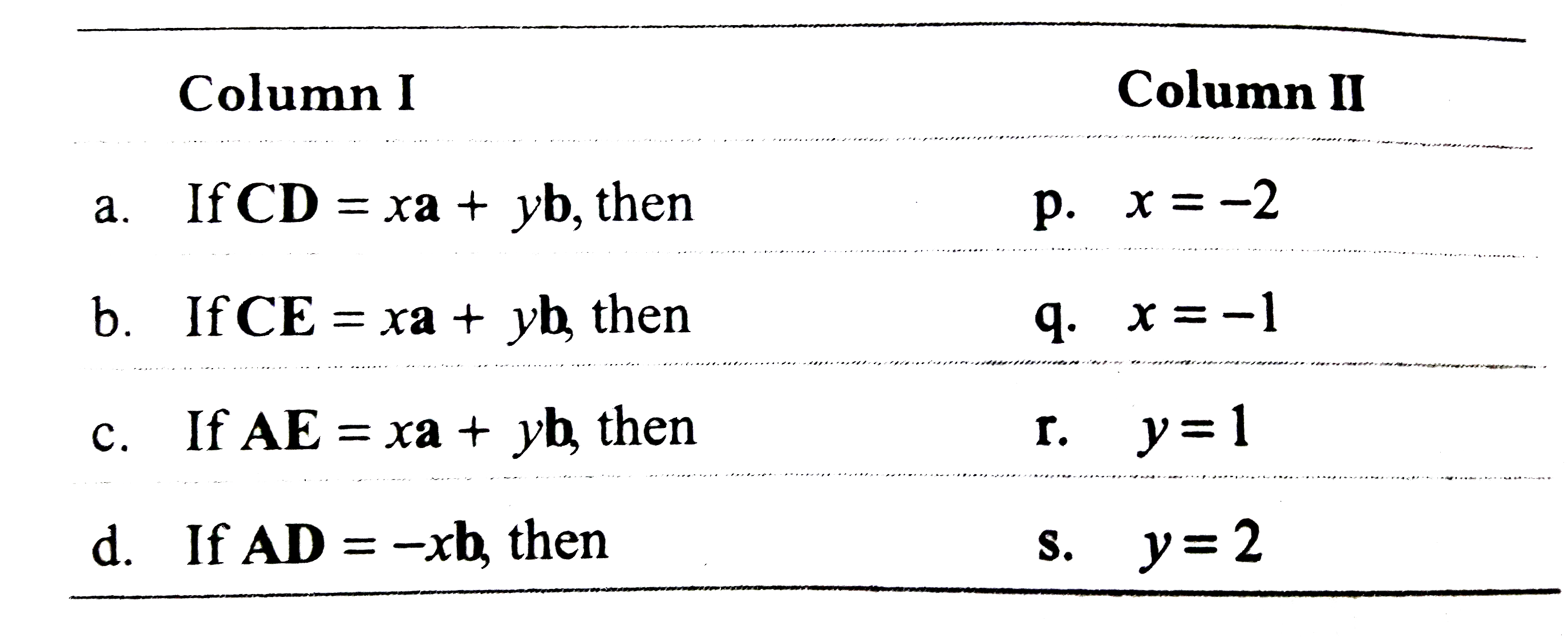The coordinates of two consecutive vertices A and B of a regular hexagon ABCDEF are (1,0) and (2,0) respectively. The equation of the diagonal CE is:
Step by step video solution for The coordinates of two consecutive vertices A and B of a regular hexagon ABCDEF are (1,0) and (2,0) respectively. The equation of the diagonal CE is: by Maths experts to help you in doubts & scoring excellent marks in Class 11 exams.
Updated on:21/07/2023Similar Questions
ABCDEF is a regular hexagon.
If ¯¯¯¯¯¯AB=¯a,¯¯¯¯¯¯BC=¯b then ¯¯¯¯¯¯CE=
View SolutionThe coordinates of two consecutive vertices A and B of a regular hexagon ABCDEF are (1,0) and (2,0), respectively. The equation of the diagonal CE is
View SolutionIn a regular hexagon ABCDEF, −−→AE
View Solutiona and b form the consecutive sides of a regular hexagon ABCDEF.

View SolutionThe coordinates of two consecutive vertices A and B of a regular hexagon A B C D E F are (1,0) and (2,0), respectively. The equation of the diagonal C E is
View SolutionIf a→ , b→are the vectors forming consecutive sides of a regular hexagon ABCDEF, then the vector representing side CD is
View Solutiona and b form the consecutive sides of a regular hexagon ABCDEF.

View SolutionThe coordinates of two consecutive vertices A and B of a regular hexagon ABCDEF are (1,0) and (2,0) respectively. The equation of the diagonal CE is:
View Solution
